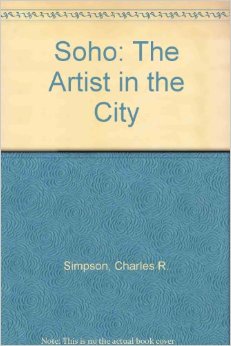In case you were wondering what it looks like, they figured this out in 1595 - it’s basically Australia upside down or something.

Hand drawn maps by Psyekl
I look for inspiration in a number of places; one of them is the mapping impulse we all seem to have and that manifests itself in a number of ways - including things like the hand-drawn map association. I’m not sure exactly what’s going on with these maps below but they seem loosely tied to fantasy fiction and gaming from the 80s. In any case they’re beautiful.
The artist is Ivan E Ramirez, and he’s on Deviantart as psyekl here.
Source Materials Redux
I started this blog with a post back in January 2011 about the things I look at and think about when making my own work. Since then I mostly keep my visual research images in Pinterest here - it’s mostly astronomy, microbiology, communal/group organisms like mold, and urban planning.
I still prefer physical notebooks for studio journaling. For one thing, when you have a thought while looking at your own work and want to quickly jot it down, doing it in an iPad or whatever is an invitation to be assaulted with notifications, bleeps and tweets all calling for your attention...when really you just want to jot something down and turn your eyes back to what’s important. Plus most of my studio notes from back in the 90s are on pen and paper. There’s an offline archive there that’s very personal and acts as a reference point for where I’ve been and where I’m going.
But for sheer rapid research and image aggregation, internet wins.
Arcosanti: A Dream Waylaid
Earlier this summer Andi, Sam and I visited Arcosanti in Arizona. I’d admired Paolo Soleri’s work since undergraduate school in the late 80’s and a business trip to California gave us the opportunity to explore. The physical manifestation of Arcosanti feels a little like a dream hatched in the 60’s, since waylaid. There’s a dissonance between the ambitions of the original plans and the community’s current state. The buildings act as placeholders, anchors for huge structures to be built, to house a community of 5,000.
Around 100 people currently occupy and build on the site. They’re folks who in one form or another have committed themselves to Soleri’s principles of merging architecture and ecology in fundamental and practical ways. How we today define “Green” architecture - LEEDS certification and all - is a small bore, localized implementation at the architectural level of what Soleri intended, 40 years earlier, at the urban planning level. Of what use are “green buildings” if they don’t change the way we congregate, work, commute and connect to the earth?
And yet, now when the effects of global warming seem obvious even to the skeptics, one of the most interesting case studies for how to go about things differently percolates quietly at the fringes, unnoticed, the original concrete pours turning to decay.
Soleri died early this year. There are adherents to his Arcology philosophy that continue his architectural explorations, and they’ve recently published a book: “Lean Linear City: An Arterial Arcology”, that’s worth a read.
[codepeople-post-map]





